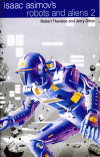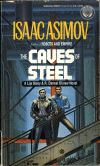It has been a while since I have read any Star Wars related books. I was pretty adamant about reading all of the Expanded Universe novels up until the explosion of new authors back around when the New Jedi Order series started. I read up until Dark Tide I: Ruin, then lost interest and moved on to other Science Fiction. The Rise and Fall of Darth Vader was a present from my sister. I probably would have never bought this book for myself, but nevertheless it was a good present because I enjoyed it.
First off, let me point out that this is a young adult novel. It was very light reading for me, but was still enjoyable. I haven’t read any EU prequel books, so this filled in quite a few of the gaps in Anakin Skywalker / DarthVader’s life for me. Some of the scenes are expanded from the movies, but many of them take place off screen. One of the main things I learned were the details of Darth Vader’s plot to overthrow the Emperor.
One other thing I found interesting was that the book doesn’t stop at Darth Vader’s death. We get to find out how he cheats death and joins Yoda and Obi-Wan at end of Return of the Jedi. Prior to the prequels, I assumed that all Jedi had this ability. I’m not sure how much of the information in this book is covered by other EU authors, but at least for me almost all of it was new. Wookieepedia has a comprehensive list of books that are referenced in addition to the Prequel and Original Trilogies.


